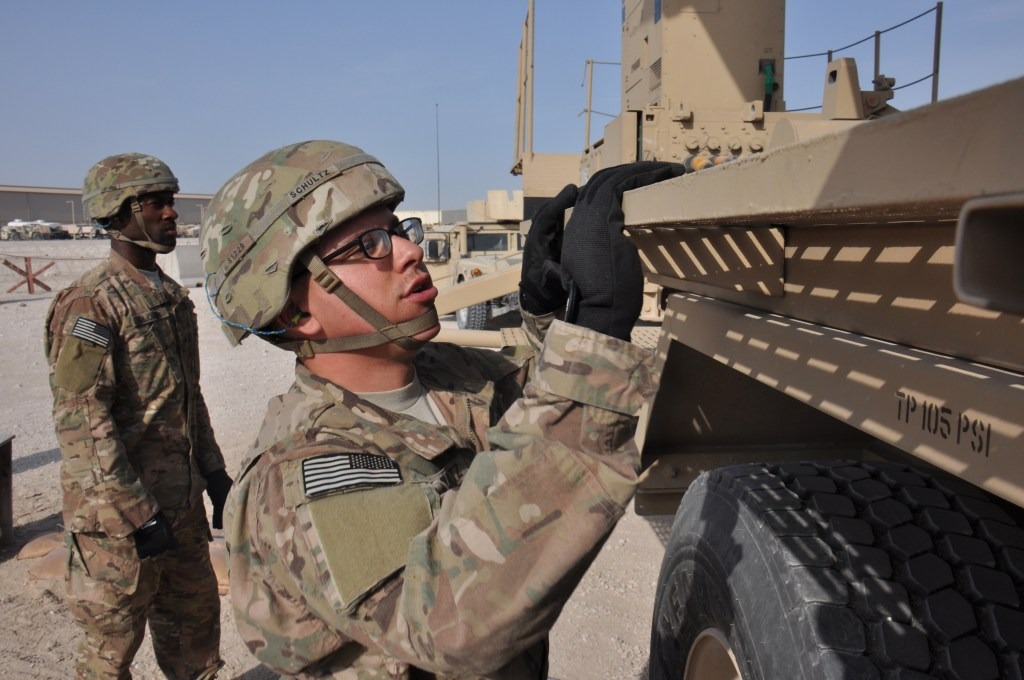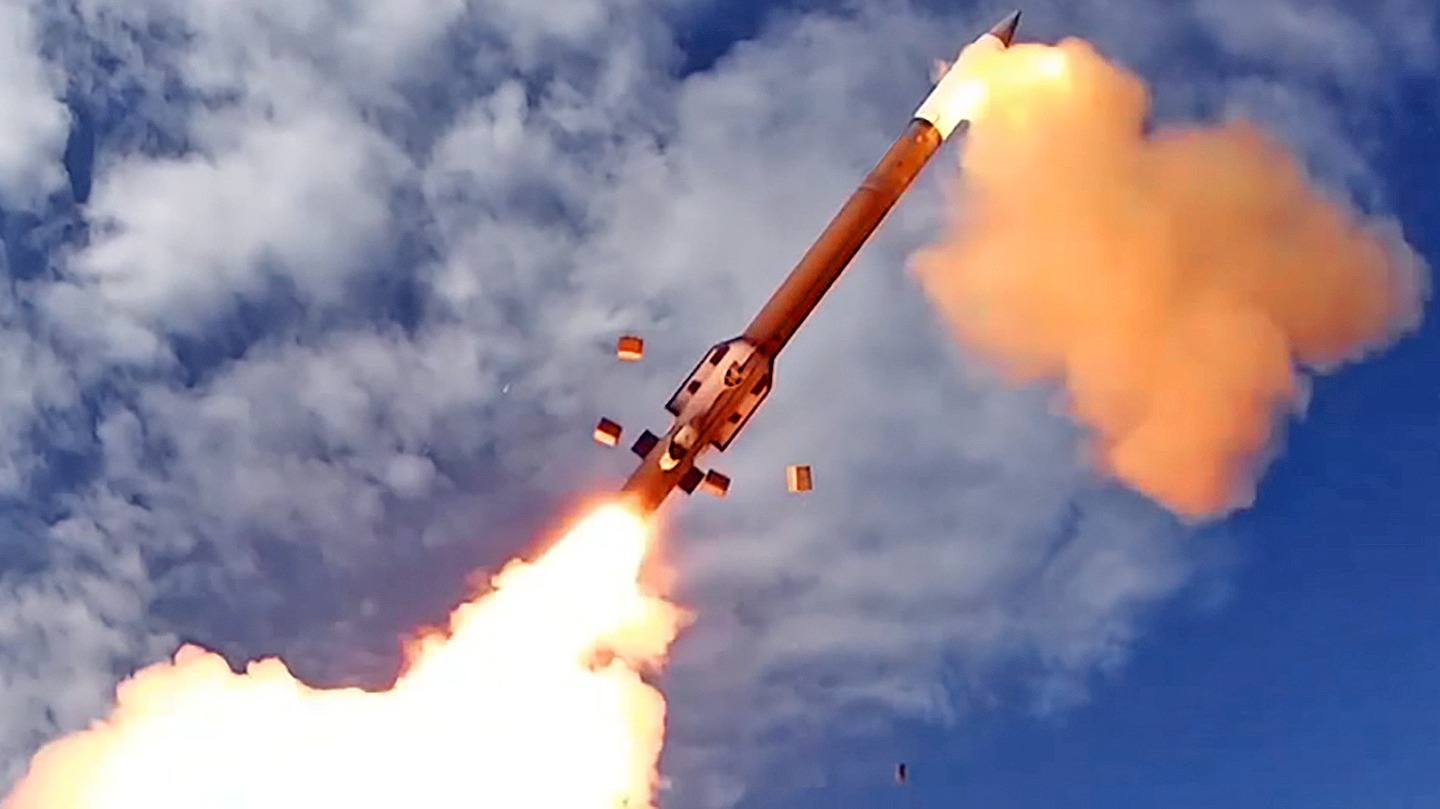Irán lanzó 10 misiles balísticos contra objetivos estadounidenses en Qatar, hogar de la extensa base aérea Al Udeid, solo quedaban dos baterías Patriot en la base, aproximadamente 44 soldados estadounidenses responsables de defender toda la base, incluido el cuartel general avanzado del CENTCOM en el Medio Oriente.
As Iranian ballistic missiles were flying toward a nearly empty Al Udeid Air Base in Qatar on Monday, a small crew of air defenders stayed behind to protect the largest American military installation in the Middle East. Thursday morning, Air Force Gen. Dan Caine, Chairman of the Joint Chiefs of Staff, offered new details about that effort, which he said resulted in the largest single-event launch of Patriot interceptors in U.S. military history. You can read more about that attack in our initial reporting here.
Monday morning, three days after the Operation Midnight Hammer attack by U.S. Air Force B-2 Spirit stealth bombers dropping 14 30,000-pound GBU-57/B Massive Ordnance Penetrator (MOP) bunker buster bombs on Iran’s Fordow and Natanz nuclear facilities, “we began to receive indications and warnings that Iran intended to attack U.S. bases in the region that morning,” Caine told reporters, including from The War Zone.
As a result, in consultation with U.S. CENTCOM commander Gen. Michael “Erik” Kurilla, U.S. President Donald Trump ordered Al Udeid and other bases around the region to “assume a minimum force posture,” said Caine. As we previously noted, satellite images showed that most aircraft had left Al Udeid days before, and Navy ships departed from their base in Bahrain in anticipation of an Iranian response to any U.S. actions. You can see satellite imagery indicating the departure of aircraft from Al Udeid below.
“Most folks had moved off the base to extend the security perimeter out away from what we assessed might be a target zone,” Caine explained. “Except for a very few Army soldiers at Al Udeid.”
At that point, “only two Patriot batteries remained on base, roughly 44 American soldiers responsible for defending the entire base, to include CENTCOM forward headquarters in the Middle East…and all the U.S. forces there,” said Caine.
“The oldest soldier was a 28-year-old captain,” Caine pointed out. “The youngest was a 21-year-old private who’s been in the military for less than two years.”
Caine tried to offer some insights into what it must have been like for those troops waiting for the Iranian barrage.
“So let’s put ourselves out there for a second,” Caine posited. “Imagine you’re that young first lieutenant. You’re 25 or 26 years old, and you’ve been assigned as the tactical director inside the command and control element. Sitting next to you is the early warning operator, whose job is to notify you of an imminent attack. There’s five people inside a vehicle and five people outside of a vehicle around these for a total of, as I said, of 44. By the way, you’ve sat in the Middle East for years, deployed over and over again, extended multiple times, always being prepared but unsure of when that particular day will come that you must execute your mission and not fail at doing it.”

The Patriot crews defending Al Udeid at this point were deployed from Korea and Japan “as part of our U.S. forces there to ensure that we had the most capable missiles in the CENTCOM area of responsibility,” Caine added. This was part of a much larger move to boost U.S. forces in the region as tensions with Iran over its nuclear program mounted. As we reported before, that included the influx of Navy vessels and Air Force F-16, F-22 and F-35 fighters and KC-135 aerial refueling tankers.
“As the day continues, you start to hear more and more chatter in the information space about an impending attack. And, as the sun starts to set in the west, you get orders from your higher headquarters to make sure that your missile batteries are pointed to the north,” Caine further explained. “There are just a few other teammates. It’s hot. You’re getting nervous, and you expect an attack outside of those Patriot vehicles. Your hot crew, which is one NCO and four additional soldiers, turns a key and relinquishes control of those missiles to that young lieutenant inside the vehicle. And you wait, you know that you’re going to have approximately two minutes, 120 seconds to either succeed or fail.”
Adding to that stress on the troops is that their air defense battery would be at the top of Iran’s targeting list in a ballistic missile attack. Taking out the Patriots would have enabled a much easier path for the rest of the missiles and left the base vulnerable for follow-on attacks.

At about 7:30 PM local time (12:30 Eastern), “as the sun sets in the west, Iran attacks as the targets were detected,” Caine told reporters. “Round after round of Patriot missiles are ejected from their canisters by an initial launch charge. Then the main solid rocket motor ignites. You can feel this in your body if you’ve ever been around a Patriot taking a shot. And round after round goes out and guides against those missiles coming in.”
The defense, said Caine, was historic.
“We believe that this is the largest single Patriot engagement in U.S. military history,” Caine posited. “And we were joined in this engagement by the Qatari Patriot crews.”
Caine declined to say how many interceptors were fired, “but it was a bunch.”
Based on Army doctrine and the early warning, David Shank, a retired Army colonel and former commandant of the Army Air Defense Artillery School at Ft. Sill, Oklahoma, told us he estimated that there were between two and four interceptors fired per incoming missile. Trump previously said that Iran warned that it would launch 14 missiles at Al Udeid, a symbolic response to the number of MOPs dropped by the U.S. on its nuclear facilities.
Caine went on to explain how much material was falling as the interceptions were taking place.
“What we do know is there was a lot of metal flying around between attacking missiles being hit by Patriots, boosters from attacking missiles being hit by Patriots, the Patriots themselves flying around, and the debris from those Patriots hitting the ground,” Caine stated. “There was a lot of metal flying around, and yet our U.S. air defenders had only seconds to make complex decisions with strategic impact.”
Those troops, he added, are awesome humans [who] along with their Qatari brothers and sisters in arms, stood between a salvo of Iranian missiles and the safety of Al Udeid. They are the unsung heroes of the 21st-century United States Army. And I know a lot of you have seen the videos online and the excitement as those Patriots departed their launchers and went up… This really demonstrates the combat capability and capacity of our Army air defenders. Simply stated, they absolutely crushed it.”
The success of the Al Udeid interceptions follows unprecedented experience garnered by Ukraine in defending against complex attacks from Russia with the Patriot system. Saudi Arabia’s fight against the Houthis prior to the Ukraine war also provided a lot of real-world data. These previous experiences have been used to update software, refine tactics, and develop improvements to the Patriot system that have significantly enhanced its capabilities and helped dictate its future growth pathway. This future will include the LTAMDS (Lower Tier Air and Missile Defense Sensor), a new radar that the Army is working to field now, primarily as an upgrade for the Patriot surface-to-air missile system. Among many other improvements, it will feature 360-degree coverage in a single radar system, something the Patriot lacks now.
The Iranian barrage on Al Udeid came as air defense crews are among the most overly taxed in the U.S. military. The service only has 17 Patriot battalions in total, and they are heavily deployed, especially to the Middle East. That is in addition to many other obligations around the globe. Though this reflects the immense ability of the U.S. military to project power worldwide, it also underscores the stark limitations of its existing ground-based air and missile defense capacity. Concerns about what this means for the prospect of adequately defending U.S. forces deployed overseas, as well as the U.S. homeland, is something senior U.S. military leaders, as well as The War Zone, have been drawing attention to for some time.
In previous statements, U.S. officials said there were no casualties from the Iranian barrage.
Though Trump engineered a ceasefire between Israel and Iran, the region remains tense and officials have not ruled out another U.S. strike against Iran should it continue its nuclear weapons development.
Caine did not say when or if the troops and diverse collection of aviation assets normally at Al Udeid, will return. We will keep an eye on this and provide updates if new information is presented.
Fuente: https://www.twz.com


